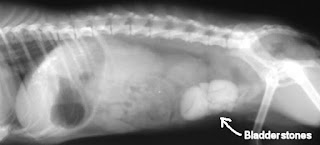Lionhead
 |
| Lionhead Rabbit |
Lionhead breed profile, one of the descendants of the last rabbit, named for the mane of long hair standing on the edge around the head. They are a small rabbit, lively and energetic but good-natured.
Size: Small / Medium
Hair type: Medium
Origins
The race Lionhead rabbit is one of the newest and has been developed as a result of a genetic mutation that causes hair growth 'mane' on the head. In nature, mutations occur quite frequently, and many descendants still arise from mutations through selective breeding program.
Lionhead is a large gene mutation before satin rabbits in 1932, and unlike other fur gene mutation is dominant. This means that Lionhead rabbit crossed with normal rabbit will still transmit the genes 'mane' for some children, producing more Lionheads. There are several accounts of where the mutation first occurred Lionhead; some sources say he was born in Belgium, because of the intersection of Swiss Fox with Belgian dwarf rabbits dwarf rabbit to make long-layered, with the offspring then raised with Dwarf Angora.
Another source said that the mutation occurs only in the litter of purebred Dwarf Angoras , with Lionhead dominant genes spread through the Dwarf Angora breed in Europe. Undesirable traits in Angora dwarf, has tried to regulate genes in a new type of "Tete de Lion '. Whatever its origin, the Lionhead definitely born in Europe, and dwarf angora plays an important role in the early development. Rabbit with genes 'mane' imported into the UK and grew up with other small wool breed and Dwarf breeds , to develop the kind of Lionhead, as we know it today. ( The Netherlands Dwarf has a strong influence on the construction of a compact body shape and small ears of the breed standard, and also introduces a variety of colors).
The Lionhead officially recognized by the British Rabbit Council in 2002, in all colors and patterns are known. Lionheads imported in the United States around 2000, in which proliferate under development but not yet recognized by the American Rabbit Breeder Association.
Appearance
Lionhead is a small rabbit, weighing about 1.3-1.7kg (3-3¾lbs).
Lionhead rabbit has a compact, medium build with short stature, broad and round. The head is large, slightly rounded and close-set on the body, with short, erect ears. Lionheads have soft, medium-length hair on the body, with the 'mane' soft wool, 5-7cm (2-3inch) long, standing on the edge around the head and extends to the 'bib' on his chest.
Nurseries Lionheads faithful to the breed standard is not easy. Rabbits having inherited two dominant genes (MM) will have a double mane; maned twin baby rabbits had normal feathers on the head and back that extend to form vee in the tail, with the hips and bare belly. As they grow, the body develops a normal fur, with a thick head of hair more wool in the head, shoulders and chest, and expand in the form of V-neck back. Many Lionheads double mane have excess hair on the sides and a few tufts may develop at the tip of the ear, this is regarded as an error in the case of series.
 |
| Lionhed Rabbit |
Rabbits inherit a dominant gene and a recessive gene (Mm) will only mane; maned rabbit single child had a normal fur, when they grow up they develop more wool around the head and ears are often thinned by an adult. Single rabbit mane usually hybrid, the result of crossing a double mane rabbits with normal rabbit. Crossing two single rabbit produces some mane (MM) double mane, some (mm) single rabbit mane and some rabbits inherits two recessive genes (mm) will have a normal fur. As double rabbit mane often develop too many feathers, and a single rabbit maned normally lose some of their mane in adulthood, multiply by Lionhead ideal is complex.
Colour
All colors can be found in other types recognized in Britain,
- Generally white (red or blue eyes)
- Black
- Blue
- Brown
- Purple
- Siam Sable
- Siamese Smoke Pearl
- Sable Point
- Tortoiseshell
- Agouti
- Castagna
- Opal
- Lynx
- Chinchilla
- squirrel
- Tan
- Fox
- Sable Marten
- Smoke Pearl Marten
- Silver Marten
- Otter
- Orange
- Fawn
- Steel
- Butterfly
Lionhead breed is not recognized in the United States, but is experiencing a growth in many colors on top, including broken model.
Temperament
Lionheads generally good-natured rabbit, though lively and often shy. Tenderness and understanding needed to win their confidence and bring out the best of their personality. They can be very outgoing and sociable and will thrive on attention.
They are usually energetic, active and playful, and despite its small size, requires a lot of space to run and play. Lionheads generally not recommended with children because they need an experienced management.
They tend to be easily startled and may become aggressive. Some Lionheads may have a more passionate, or even aggressive. Lionhead is a kind of new and still under development in many countries, temperament can vary slightly depending descent used to develop each line.
Special Requirements
Lionhead rabbits may be more sensitive than other breeds to dental disease, a potentially fatal condition that is often hereditary.
Select a rabbit with a good temperament and low risk of dental problems inherited from reputable breeders or rescue centers.
Lionheads require additional treatment, the manes 'wool' must be swept once a week to prevent matting, the daily care required during moulting.
Lionheads higher risk of hairballs in the developing world, which can cause gastrointestinal fatal.























